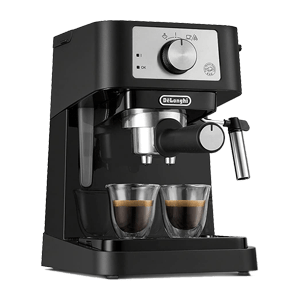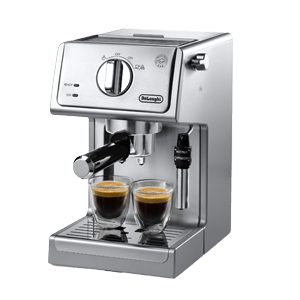Taking a step further from The Eureka Mignon Silenzio as the name suggests is reinforced with a much more sound-insulated casing to reduce the noise. Rubber mounts and gaskets cover every exit to give the Silenzio its muted grind. This stepless grinder gives you control over the grind settings and contains 50mm hardened steel burrs for a consistent grind. Like the Specialiata it also gives you the freedom to preserve your grind settings by making them available under the motor mount. You also get the timer to adjust your dosing on the side.
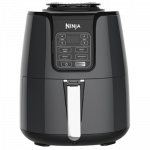
Best Espresso Machine
NINJA AF101 AIR FRYER
Read more
Best Small Capacity Air Fryer
Ninja AF101
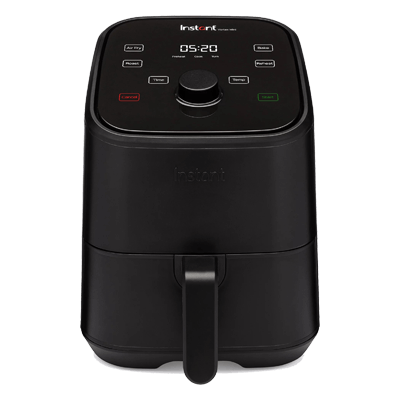
Popular Small Capacity Air Fryer
Instant Vortex
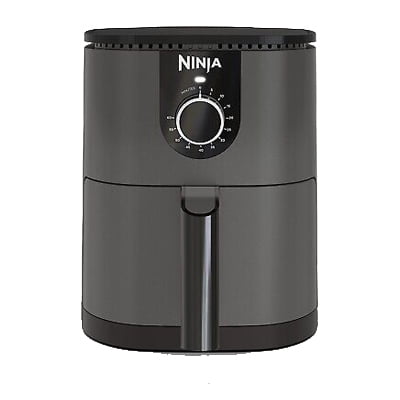
Rising Small Capacity Air Fryer
Ninja AF080 Mini
If you need quiet surroundings then Silenzio is a perfect choice. It doesn’t get any better than this when it comes to sound insulation unless it’s a hand grinder. The compact size of the Mignon series gives you the freedom to place your grinder at any place with no hesitation on your counter. The ground path is designed to be clean and can’t find any clumps ever after regular grinds. We found the dose timer a bit difficult to adjust at first as it does not show any reference to it.

Best Small Capacity Air Fryer
Ninja AF101
Technics AZ80 Earbuds
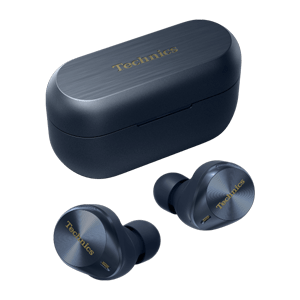
Most Balanced Earbuds
3
Technics AZ80
Design
One of the first things you notice with the AZ80 is their clean, minimalist design. The case has a matte finish with a brushed metal lid, which gives it a refined look compared to the previous AZ60 model. The earbuds themselves feature the same vinyl record-like design on the touch surface, a subtle nod to Technics’ audio heritage.
Though they are on the larger side, they offer a more compact vertical profile than their predecessor, improving the fit. I was pleasantly surprised by how securely they stayed in my ears, even during light physical activity. While not the most compact earbuds on the market, the comfort level is decent for extended use. Bulkier than the AirPods but a significant improvement from its predecessor.
Sound Quality
Where the AZ80 truly shines is in its audio performance. Technics is known for delivering high-quality sound, and these earbuds are no exception. The AZ80 offers an open and spacious soundstage, which is perfect for complex tracks with multiple layers. The treble is detailed with a pleasant sparkle, and the bass—especially with the “Super Bass” preset—packs a punch without overwhelming the other frequencies. I personally preferred the dynamic preset, which offers a balanced mix of bass and treble.
Vocals, both male and female, are exceptional on these earbuds, providing clarity and natural tones. Instrument separation is also top-tier, allowing individual elements of tracks to shine.
In terms of sound quality, I’d place these right alongside the Denon Pearl Pro, and perhaps just a notch below the Sennheiser Momentum 4 in terms of treble clarity if the Momentum 4 is customized correctly. Stock Momentum 4 is below par with the Technics at a glance.
Noise Cancellation and Ambient Mode
The ANC on the AZ80 performs admirably but doesn’t quite reach the levels of the AirPods Pro 2 or XM5, much less it barely competes with the Bose QC (Gen 2). It’s effective for daily commutes and office environments, but if you’re seeking absolute silence, there are better options available. The ambient mode is another strong point, offering a natural and customizable sound that can be adjusted through the Technics app. In terms of ANC, the AZ80 is slightly behind the AirPods Pro 2, XM5 and Bose QC Earbuds 2, but ahead of many other mid-range earbuds.
Multi-Point Connection and Connectivity
Allowing you to connect to up to three devices at once, is truly what keeps Technics apart from the competition. While this feature is quite impressive, there are some caveats. If you’re using multi-point with three devices, you lose the ability to use LDAC for high-resolution audio. However, reducing the connection to two devices brings LDAC back into play. I found that switching between devices was smooth, though I had to adopt the habit of pausing and minimizing apps before switching to avoid any issues.
The Sony WF-1000XM5 offers multi-point connection as well, but only for two devices. The ability to connect to three devices with the AZ80 is a rare and convenient feature.
Battery Life
Battery performance on the AZ80 is solid, offering around 7 hours of use on a single charge and up to 24 hours with the case. The fast-charging capability is another bonus, providing 70 minutes of playback after just 15 minutes of charging. The addition of wireless charging is a welcome upgrade over the AZ60 model, making the AZ80 much more convenient for those using wireless charging pads.
Call Quality
For phone calls, the AZ80 performs surprisingly well in some instances. The “Just My Voice” feature isolates your voice and eliminates background noise effectively. A unique feature allows you to record and playback your voice in the app to check microphone quality. The AZ80 also offers a feature that reduces background noise from the caller’s end, which is something I haven’t seen in other earbuds. Can’t seem to pinpoint as the best call quality, but if you love everything about it then this won’t disappoint.
Verdict
If you are looking for earbuds that sound excellent and looking for the perfect balance of audiophile and daily driver earbuds, then Technics will do the trick for you. It performs excellent in its sound signature while balancing out other features overall. If you are in the look out for ANC and call quality as the priority features then options such as AirPods and XM5 will take the lead.
Bose QuietComfort Ultra Earbuds
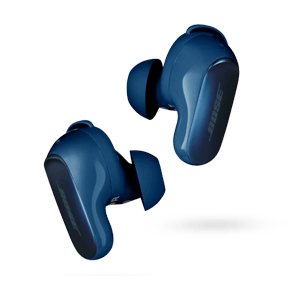
Best AirPods Alternative
4
Bose QC Ultra
First off, the noise-canceling performance on these earbuds is stellar. Bose continues to catch-up with the XM5 in this department. While testing them in noisy environments like cafes and public transport, the QC Ultra handled background noise with ease. Compared to the Bose QuietComfort Earbuds Gen II, the Ultra’s noise-canceling felt on par, but not a significant leap ahead. Both models block out the world around you, but if you’re specifically looking for a noise-canceling powerhouse, either of these will impress.
Where the QC Ultra stands out, though, is the addition of spatial audio with head-tracking, something that’s missing in the Gen II version. Some may not prefer the spatial sound feature in AirPods and may continue to do the same with Bose. However Bose has managed to edge past AirPods when we tested.
Sound Quality
The sound quality of the Bose QC Ultra is excellent, balanced, clean, and detailed. They deliver that typical Bose sound signature, with clear highs and mids. However, I was hoping for a little more punch in the bass, especially for a premium product. Compared to the Sony WF-1000XM5, which delivers a bit more richness in the lower end, I felt the QC Ultra could have offered a little more bass impact, especially for bass-heavy genres like hip-hop or EDM.
Still, they’re great for classical, jazz, and even podcasts, where clarity is more important than thumping bass. For casual and balanced listening, the QC Ultra are a pleasure, but they don’t give you the kind of customizable EQ settings you get with the Sony XM5.
One standout feature is the support for Snapdragon Sound, which promises higher-quality audio streaming on compatible Android devices. If you own an Android phone with Snapdragon Sound, you’ll notice a bump in quality, but for iPhone users, this feature doesn’t add much value. This puts the QC Ultra at an advantage over competitors like the AirPods Pro 2, but only for a specific audience.
Comfort and Design
One area where Bose has really improved is comfort. The QC Ultra has a more ergonomic design than some previous Bose earbuds, fitting snugly without feeling too bulky in the ear. But here’s the catch: the charging case is quite bulky, making it harder to slip into a pocket compared to something sleeker like the AirPods Pro 2 or the Bose QC Earbuds Gen II. The case’s design could definitely be more compact given the price tag of these earbuds.
I also found myself missing swipe controls for volume adjustment, something that would make using them on the go even more convenient. You still have to reach for your phone to adjust the volume, which is a small but noticeable annoyance, especially when you’re paying a premium for these earbuds.
Transparency Mode
The transparency mode on the QC Ultra works well enough but lacks the natural feel you get with competitors like Apple’s AirPods Pro 2. Apple has really nailed the transparency feature, making it feel like you’re not even wearing earbuds, while the QC Ultra still sounds somewhat artificial. Compared to Bose’s own QC Gen II earbuds, the QC Ultra is a bit behind in terms of natural sound passthrough.
Battery Life and Features
The battery life is decent—around 6 hours on a single charge, which is pretty standard but also competitors do have much to offer in this area.
Verdict
Overall, the Bose QuietComfort Ultra Earbuds deliver great noise-canceling and solid sound quality, with a few standout features like spatial audio and Snapdragon Sound. However, for a product at this price point, there are some trade-offs, like the bulky case, lack of swipe controls, and a less-than-perfect transparency mode. Bose can also be an excellent alternative for AirPods as they have more customizability and spatial audio. Again this may not be the best on ANC and transparency but handles most things pretty well.
Bose QuietComfort Gen 2
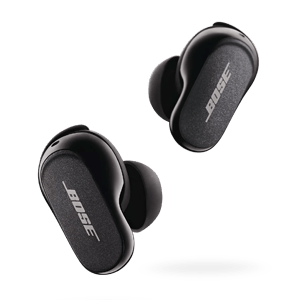
Best Value Bose
5
Bose QC Gen 2
The Bose QC Ultra earbuds take the premium noise-canceling experience of the QC Earbuds Gen 2 and elevate it with some exciting new features. Both models deliver industry-leading Active Noise Cancellation (ANC) and excellent sound quality, but the QC Ultra stands out with the addition of spatial audio with head-tracking, offering a more immersive sound experience perfect for videos and certain music genres.
In terms of design, both are equally comfortable, though the QC Ultra’s charging case is a bit bulkier than the more pocket-friendly QC Gen 2. While both models feature effective transparency modes, neither matches the seamlessness of competitors like the AirPods Pro 2.
A significant upgrade in the QC Ultra is Snapdragon Sound support, enhancing audio quality on Android devices, which the Gen 2 lacks. However, both models share the same 6-hour battery life and touch control system, though neither has swipe volume controls.
If you’re after cutting-edge features like spatial audio and superior sound quality for Android, the QC Ultra is worth the higher price. On the other hand, the QC Gen 2 offers a more traditional, premium ANC experience at a slightly lower price, making it a great choice for those who don’t need the extra tech features.
Astell & Kern UW100
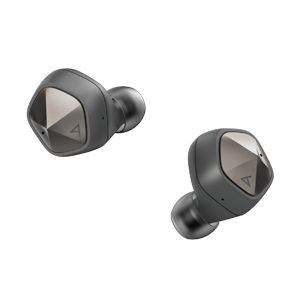
Best Audiophile Earbuds
5
AK UW100
The biggest selling point of the UW100 is its sound quality, and I can confidently say it doesn’t disappoint. AK has incorporated some of their cutting-edge tech, including a 32-bit Hi-Fi DAC and circuitry from their expensive DAPs. This is something you won’t find in most wireless earbuds, which usually rely on integrated DACs in the Bluetooth System on Chip (SoC). It’s like the difference between having a PC with a discrete graphics card (think RTX 3090) versus an integrated one. The result? A clean, smooth, and non-fatiguing sound with rich detail, especially in the mids and treble.
Vocals and instruments like strings have a lovely presence with good vibrancy and detail. There’s also plenty of “air” in the highs, making cymbals and hi-hats feel crisp and natural. However, you can notice that the soundstage felt a bit more closed-in compared to other premium earbuds, like the Sony WF-1000XM5, which have a more spacious, open feel. The AKs provide a more intimate listening experience, which can add excitement to certain genres.
The bass on these earbuds is another area that may divide listeners. Personally, I enjoy the extra punch the UW100 delivers, especially in the upper bass. It adds weight and impact to the sound, which I love for rock, jazz, and even synthwave. However, I know some audiophiles are picky about bass, and AK’s decision to boost it might not sit well with everyone. For comparison, the Sony WF-1000XM4 has a more balanced bass response, which some may prefer for a flatter sound profile.
Active Noise Cancellation
Now, one of the biggest surprises for me was the lack of Active Noise Cancellation (ANC). In a world where most premium earbuds, including the Sony WF-1000XM5 and Apple AirPods Pro 2, come with ANC, this feels like a notable omission. That said, the UW100 has excellent passive noise isolation. Thanks to its snug fit and earplug-like suction effect, it blocks out mid-range sounds and human voices quite effectively. It’s not as quiet as ANC-equipped earbuds, but it gets the job done in many everyday environments.
The lack of ANC might actually appeal to some audiophiles who believe that ANC negatively affects sound quality. Still, for the price, it feels like AK could’ve offered more in terms of noise control.
App and Customization
One area where you can get particularly disappointed was the AK UW100 app. Coming from a brand like Astell & Kern, I expected a robust experience, but what I got was underwhelming. The app only offers 4 EQ presets, and honestly, only the Bass emphasis mode is any good. The others make the sound feel thin and tinny. There’s also no graphic EQ, which is something that many competitors like the Sony WF-1000XM5 offer, giving you way more control over sound.
Worse still, the app has a habit of randomly disconnecting from the earbuds, which gets frustrating. On the customization front, there’s not much you can do. You’re limited to adjusting a couple of gestures on each earbud, and that’s about it. This really hurts the overall user experience, especially when compared to the Sony and Bose apps, which provide more options and are far more stable.
Battery Life
The battery life on the AK UW100 is decent, offering up to 6 hours on the buds and another 24 hours with the case. It also supports wireless charging and multipoint pairing, which is great for connecting to two devices at once.
However, the charging case is quite bulky, almost as large as the Bose QuietComfort Earbuds, which makes portability a bit of a hassle. Plus, while the UW100 has transparency mode with four levels of passthrough, the sound isn’t as natural as I’d like. It’s usable, but there’s some muffling that I didn’t notice in the AirPods Pro 2 or Sony XM5s.
Call Quality: Below Average
If you’re someone who makes a lot of calls, you might want to look elsewhere. The call quality on the UW100 is below average. Background noise cancellation isn’t great, and my voice often sounds distant and muffled. By comparison, the Sony WF-1000XM5 and Apple AirPods Pro 2 are leagues ahead when it comes to voice clarity and noise suppression during calls.
In conclusion, the Astell & Kern UW100 shines where it matters most to audiophiles: sound quality. The audio experience is detailed, smooth, and enjoyable, with a tuning that works well for various genres. If you are expecting it to be best overall, the sad news is it isn’t. The price tag is solely for the sound quality it delivers and that is pretty much it.
If you’re a hardcore audiophile who values sound quality above all else and doesn’t care about ANC or call performance, the UW100 might be worth a try. But for most people, especially at this price point, I’d recommend looking at other options first.
Audio Technica ATH-TWX9
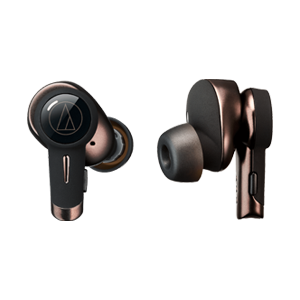
Best Audiophile Earbuds
6
Technica ATH-TWX9
The Audio-Technica ATH-TWX9 is a premium pair of wireless earbuds that are clearly designed to compete with the likes of Sony, Bose, and other high-end audio brands. After spending some time with them, I can say they’ve got a lot going for them, but they also come with a few quirks.
One of the standout features is the support for Sony’s 360 Reality Audio, which delivers an immersive, spatial audio experience. It’s similar to Dolby Atmos but specifically for music. This is great if you’re subscribed to services like Tidal or Amazon Music that support 360 Reality Audio.
Unfortunately, it doesn’t support LDAC, which is something Sony’s own WF-1000XM5 offers, but aptX Adaptive is a solid alternative. It ensures high-quality wireless audio, especially for devices that support Snapdragon Sound, giving the TWX9 an edge in sound quality for Android users.
Active Noise Cancellation
When it comes to active noise canceling (ANC), I found the TWX9 to be impressive. It does a great job at canceling low-frequency noise, catching up-to the XM5 and Bose. For commuting or working in noisy environments, the TWX9 holds up well and won’t disappoint.
Sound Quality
The sound signature is best described as balanced and laid-back. It doesn’t have the punchy bass you get from something like the Jabra Elite 85t or the booming lows of the Sony WF-1000XM5. Instead, it emphasizes the midrange, which is perfect for vocal clarity and instruments like bass guitar. If you listen to a lot of vocal-heavy tracks or genres that thrive on detailed midrange, these will sound excellent. The option to tweak the sound with the A-T Connect app is a nice touch, though the custom EQ doesn’t quite offer the same depth as Sony’s app.
A cool, albeit somewhat gimmicky feature, is the UV-LED sterilization inside the case. It kills some bacteria when the earbuds are stored, which might appeal to more hygiene-conscious users. Personally, I think it’s more of a “nice to have” feature rather than a game-changer. On the downside, the controls can be a bit confusing. With a mix of touchpads and physical buttons, it takes a while to get the hang of which button controls what.
Battery Life
I also wish the battery life were better. At 18 hours total (6 hours in the buds, 12 in the case), it falls short compared to competitors like the AirPods Pro 2 or Galaxy Buds 2 Pro, both of which last longer.
Overall, the Audio-Technica ATH-TWX9 offers rich features and excellent sound quality, especially for those who prioritize clarity and balance over heavy bass. However, the complex controls and average battery life may be a drawback for some. If you’re willing to spend a bit of time mastering the controls and don’t mind charging more frequently, these earbuds are a solid option for audiophiles.
Beyerdynamic Free Byrd
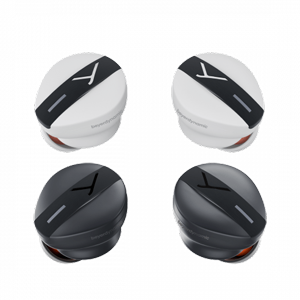
Popular Audiophile Earbuds
7
Beyerdynamic Free Byrd
First off, the sound quality is exceptional. Beyerdynamic is known for its audio precision, and the Free Byrds don’t disappoint. Compared to the AirPods Pro 2, I found the Free Byrds to offer more clarity, especially when listening to classical music. The Free Byrds capture every nuance, from the opening chord to the diminished sevenths, with impressive accuracy. The bass is also well-balanced, not overpowering but present enough to give depth to various music genres. Overall, these earbuds outperform the AirPods Pro 2 in terms of clarity and precision.
Customization is another strong point. Using the Beyerdynamic MIY app, you can set up a personalized sound profile tailored to your hearing, which is something you don’t get with a lot of other high-end earbuds. While the AirPods Pro 2 and Sony WF-1000XM5 offer adaptive sound, the Free Byrds go a step further with a hearing test that adjusts the sound frequencies specifically for your ears. There’s also an equalizer if you prefer manual tweaks.
Another feature I loved is the noise cancellation. It’s not quite as aggressive as the Sony WF-1000XM5, but it’s highly effective in most everyday environments like grocery stores or busy streets. The transparency mode is also excellent, allowing you to hear your surroundings when needed, similar to what you get with the AirPods Pro 2.
The ear tips are another standout. One of my biggest issues with some earbuds, including the original AirPods, is that they don’t always fit well. Beyerdynamic solves this by including a range of ear tips, including foam expanding tips, ensuring a snug and comfortable fit for extended use.
Lastly, I appreciated the wireless charging case with USB-C and Qi wireless charging support. It’s convenient, and charging on a Qi pad is quick and effortless, a feature that’s becoming standard but is still nice to see.
While there’s a lot to love, the Free Byrds aren’t perfect. For starters, the bulkier design might not be for everyone. These earbuds are wider than many competitors, so they may feel a bit more noticeable when worn. If you’re used to the sleek design of the AirPods Pro 2, you might find these a bit cumbersome.
Another potential drawback is the price, the Free Byrds are priced similarly to other premium wireless earbuds. While they offer a lot for the money, it’s still a steep price, especially for users who may not take full advantage of the advanced sound customization features.
Finally, the touch-sensitive controls take some getting used to. While the app shows all the available gestures, the learning curve is steeper compared to AirPods, which have simpler, more intuitive controls.
Overall, the Beyerdynamic Free Byrds are an excellent choice for anyone serious about sound quality and customization. While they may not be as compact as the AirPods Pro 2 or have the noise cancellation prowess of the Sony WF-1000XM5, their clarity, fit, and personalization features make them stand out. If you’re an audiophile or someone who loves tailoring their listening experience, these earbuds are worth the investment.
Denon Perl Pro
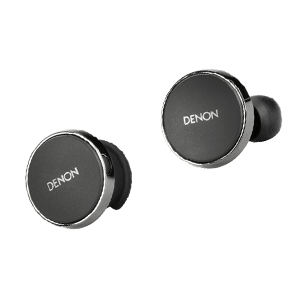
Popular Audiophile Earbuds
8
Denon Perl Pro
First off, the microphone quality is impressive. Whether I’m in a noisy food court or out in a crowded street, the Denon PerL Pro consistently blocks out background noise while keeping my voice clear. In controlled environments, I noticed the same: solid performance even when I added wind noise and loud chatter in the background. It’s on par with some of the best in the market, like the Sony WF-1000XM5 and Apple AirPods Pro 2. If call quality is important to you, these won’t disappoint.
Active Noise Cancellation (ANC)
The ANC is another strong point. In noisy environments, like public transport or a busy cafe, the PerL Pro handles human chatter and background rumble with ease. It’s not the absolute best, but it comes very close to what you’d expect from top competitors like the Sony XM5 or the Jabra Elite 10. However, unlike some competitors, you don’t get much control over the noise-canceling intensity, which feels like a missed opportunity, especially given how some earbuds allow for deeper customization here.
Unfortunately, transparency mode is where the Denon PerL Pro falters. The transparency mode feels quite artificial, almost like you’re hearing the world through a radio. It’s usable if you’re having a quick conversation, but if you’re expecting the kind of seamless, natural pass-through you get with something like the AirPods Pro 2, you’ll be let down. It’s easily the least impressive feature of these earbuds.
Sound Quality
Now, let’s talk about sound. Out of the box, I wasn’t blown away. The sound was clean and punchy, but the mid-range felt a bit overemphasized, making vocals sound somewhat tinny, while the bass was less impactful than I’d like. However, once I ran the AAT (Adaptive Acoustic Technology) tuning, it was like I had a completely different pair of earbuds. The sound became more balanced, fuller, and more immersive—exactly the kind of V-shaped signature I prefer, with deep bass and rich mids. If you’re looking for a personalized audio experience, the PerL Pro really delivers here.
